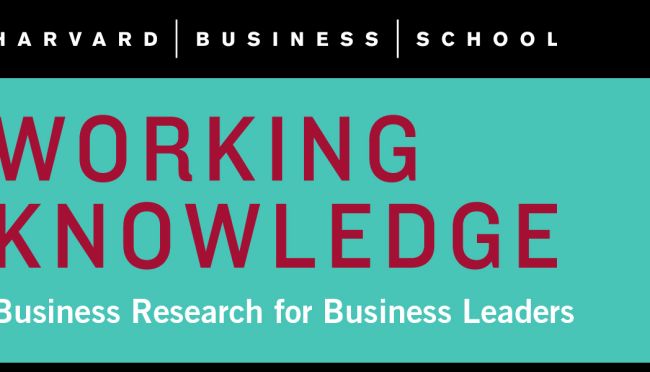Customer Value and Value Chain →
→

- 26 Jun 2023
- Research & Ideas
Want to Leave a Lasting Impression on Customers? Don't Forget the (Proverbial) Fireworks
Some of the most successful customer experiences end with a bang. Julian De Freitas provides three tips to help businesses invest in the kind of memorable moments that will keep customers coming back.

- 06 Jul 2020
- Research & Ideas
The Right Way to Manage Customer Churn for Maximum Profit
Many companies actively manage customer churn but aren't seeking out the best customers to retain, warns Sunil Gupta. Open for comment; 0 Comments.

- 01 Jul 2019
- Research & Ideas
The Airbnb Lesson for Startups? Success Takes More Than Technology
As investors speculate about the timing of an Airbnb IPO, Thales S. Teixeira discusses the analog tactics and economic conditions that helped catapult the company. Open for comment; 0 Comments.
- 03 Feb 2016
- Research & Ideas
The State of Customer Service Leadership
The economic future of the country is largely in the hands of those who lead our service organizations, which create more employment and GDP growth than any other sector. Jim Heskett, Earl Sasser, and Len Schlesinger discuss the current state of service and their recent book, What Great Service Leaders Know & Do. Open for comment; 0 Comments.

- 20 Oct 2015
- Working Paper Summaries
Internalizing Global Value Chains: A Firm-Level Analysis
Manufacturing activities that used to be performed in close proximity are increasingly fragmented across firms and countries. This paper provides strong evidence that considerations driven by contractual frictions critically shape firms' ownership decisions along their value chains.
- 09 Feb 2012
- Sharpening Your Skills
Sharpening Your Skills: Online Marketing
In this collection from our archives, Harvard Business School faculty discuss the latest research on online marketing techniques, including consumer reviews, video ads, loyalty programs, and coupon offerings. Open for comment; 0 Comments.
- 27 Jul 2011
- Research & Ideas
Customer Loyalty Programs That Work
Thanks to ever-improving technology, customer loyalty programs are proving extremely popular among retailers—but merchants are not getting all they should out of them. The reason? Professor José Alvarez says retailers need to see customers as partners, not transactions. Key concepts include: Most retailers are at a very basic level in using loyalty programs, and many customers see the programs as punitive. Successful retailers connect with customers via loyalty programs at three levels starting with an introduction, followed by a retailer-initiated communication, and finally with customer- or retailer-initiated feedback loops. Retailers should ask themselves, How do I create a partnership with the consumer? Data collected from these programs can help merchants make smarter decisions on everything from where to open a new store to pulling the plug on a fading brand. Closed for comment; 0 Comments.
- 26 Jul 2010
- Research & Ideas
Yes, You Can Raise Prices in a Downturn
If you and your customers understand the value represented in your pricing, you can—and should—charge more for delivering more. An interview on "performance pricing" with researchers Frank Cespedes, Benson P. Shapiro, and Elliot Ross. Key concepts include: Pricing builds or destroys value faster than almost any business action. Performance pricing seeks to maximize both the customer benefit and the selling company's profitability. The idea is to create more space between the value provided to customers and your cost. Performance pricers make attractive returns in almost every business—at least over the full business cycle. Closed for comment; 0 Comments.
- 29 Oct 2008
- Research & Ideas
The Next Marketing Challenge: Selling to ’Simplifiers’
The mass consumption of the 1990s is fast fading in the rearview mirror. Now a growing number of people want to declutter their lives and invest in experiences rather than things. What's a marketer to do, asks professor John Quelch. Key concepts include: As the world economy slumps, one consumer segment will grow faster than ever: The Simplifiers. Simplifiers present a challenge to marketers. These are well-off people who value quality over quantity and who do not buy proportionately more goods as their net worth increases. Dining out, foreign travel, and learning a new sport will all prove more resilient than expected in the face of recession. Closed for comment; 0 Comments.
- 07 Mar 2007
- Research & Ideas
How Do You Value a “Free” Customer?
Sometimes a valuable customer may be the person who never buys a thing. In a new research paper, Professor Sunil Gupta discusses how to assess the profitability of a customer in a networked setting—a "free" customer who nevertheless influences your bottom line. Key concepts include: In multi-sided markets, some customers contribute to a company's bottom line directly while others contribute indirect benefits, which are more difficult to calculate. Businesses must be able to assess the value of these "free" customers in order to efficiently allocate marketing and other expenses to grow the business, and to develop a more accurate estimate of firm value. Using a model for valuing networked customers, Gupta found that in an auction scenario, buyers and sellers had almost equal value even though sellers outnumbered buyers 4.6-to-1. Closed for comment; 0 Comments.
- 10 Feb 2003
- Research & Ideas
Commodity Busters: Be a Price Maker, Not a Price Taker
Too many businesses are price takers, not price makers. That means they are willing to lower prices to capture market share or to sign up a marquee customer. But Harvard Business School professor Benson P. Shapiro says don't let your ego get in the way of good business sense. Here are seven steps toward naming your own price. Closed for comment; 0 Comments.

Can Business Transform Primary Health Care Across Africa?
mPharma, headquartered in Ghana, is trying to create the largest pan-African health care company. Their mission is to provide primary care and a reliable and fairly priced supply of drugs in the nine African countries where they operate. Co-founder and CEO Gregory Rockson needs to decide which component of strategy to prioritize in the next three years. His options include launching a telemedicine program, expanding his pharmacies across the continent, and creating a new payment program to cover the cost of common medications. Rockson cares deeply about health equity, but his venture capital-financed company also must be profitable. Which option should he focus on expanding? Harvard Business School Professor Regina Herzlinger and case protagonist Gregory Rockson discuss the important role business plays in improving health care in the case, “mPharma: Scaling Access to Affordable Primary Care in Africa.”